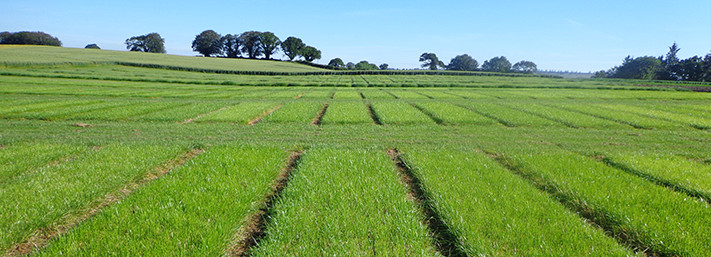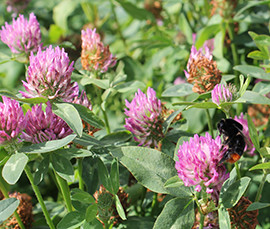New seed listings pave the way for better choice and performance
The easiest way to measure the strength of a seed-producer's R&D team is to see how readily its output is recognised by independent seed-listing authorities. A listing on a national seed register is an official stamp of approval for a new variety – and the vital first step to large-scale production.
10/05/2016
As you can see below, it seems that European seed-approvers really do value our research efforts. Each new listing means that a new variety is just a season or two away from commercial production.
France
In January, French officials granted approval for nine new DLF forage varieties and seven new turf varieties.

Our new forage listings contain a range of perennial ryegrasses, a new cocksfoot variety called CAPTUR, and two white clover varieties known as COOLFIN and DUBLIN plus the diploid red clover variety GANYMED.
The turf portfolio includes three more top-ranked tall fescue varieties.
Ireland
Three out of the four new perennial ryegrasses added to the recommended list come from DLF. And the new variety NIFTY jumped straight in to the very top slot of the Pasture Profit Index.
Germany
New forage listings in Germany are hard to come by, which is why we are delighted to have earned approval for four new forage perennial ryegrasses and one new forage smooth-stalked meadow grass. Earning a new forage Poa pratentis in Germany does not happen every year, so gaining this one is a strong vote of approval for our breeding programme. The future looks good too: in the next round of official Poa pratentis trials, we have three more candidates.
United Kingdom
 Perhaps Europe's toughest register for recommendation is maintained the UK. Winning a listing here is the highest accolade for any R&D team. This year we have added one forage perennial ryegrass and two diploid red clover varieties METIS and SUEZ.
Perhaps Europe's toughest register for recommendation is maintained the UK. Winning a listing here is the highest accolade for any R&D team. This year we have added one forage perennial ryegrass and two diploid red clover varieties METIS and SUEZ.
Our red clover successes show that our relatively young breeding programme for diploid red clover is now producing exceptional varieties. This is good news for a continent that is now encouraging its farmers to feed their livestock on home-grown protein. The emphasis on home-grown makes sound economic and scientific sense: a single hectare of European clover grass generates two to three times as much protein as a hectare of South American soybean.
To find out what is coming in your market, talk to your local DLF representative. Even if you cannot yet obtain a brand new listed variety, we do have varieties of very high quality to offer and after crop 2016, we will present new varieties ready for the market.
